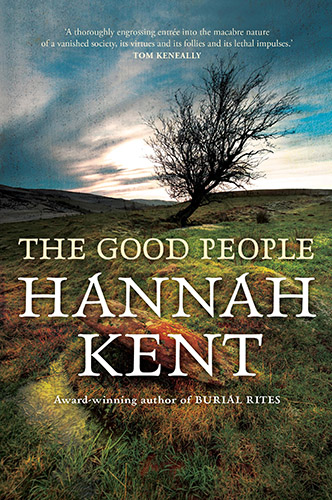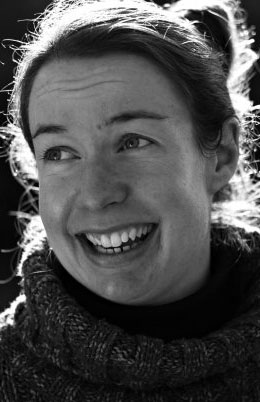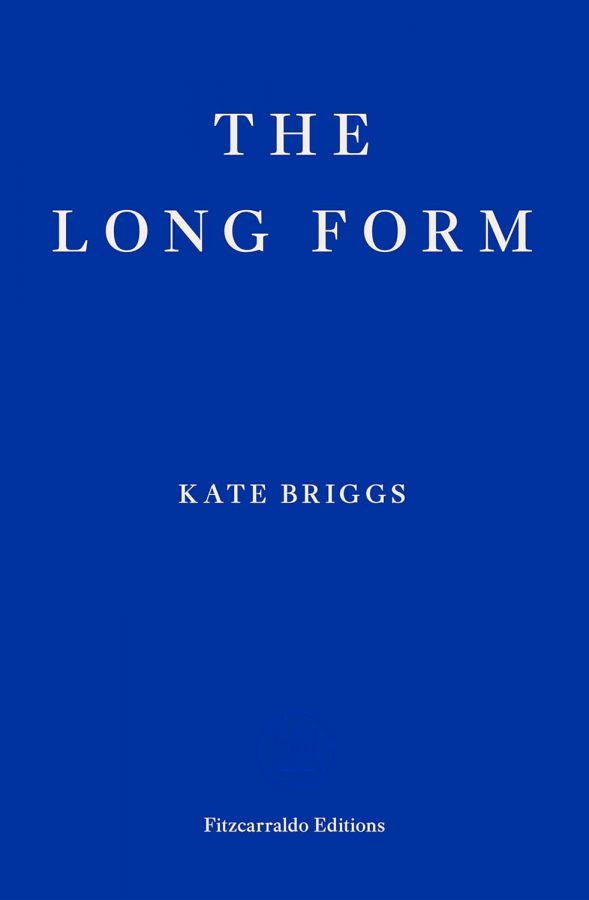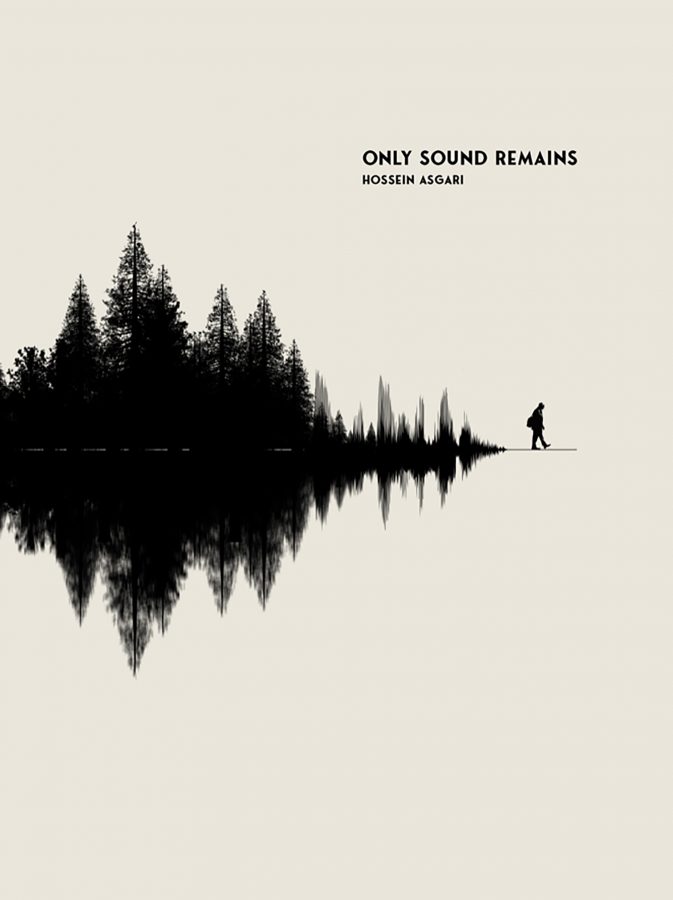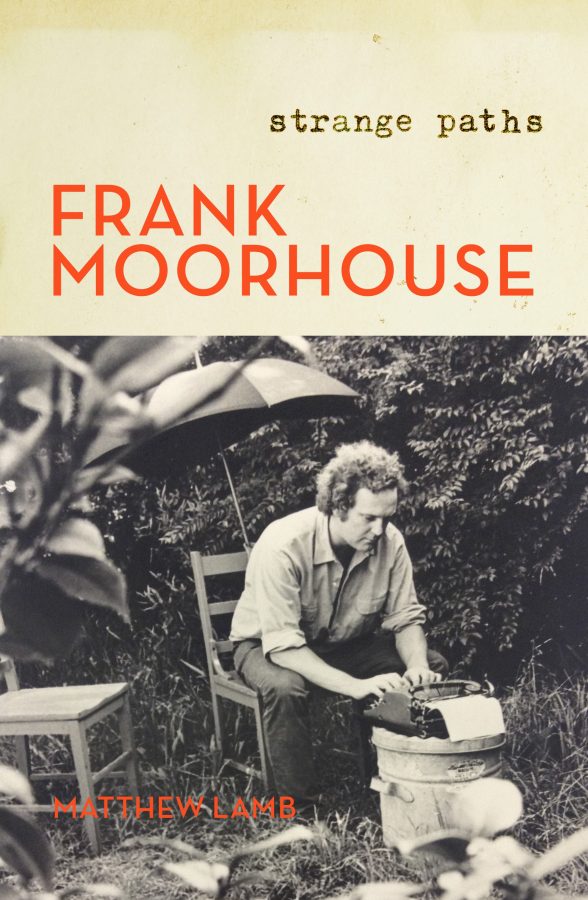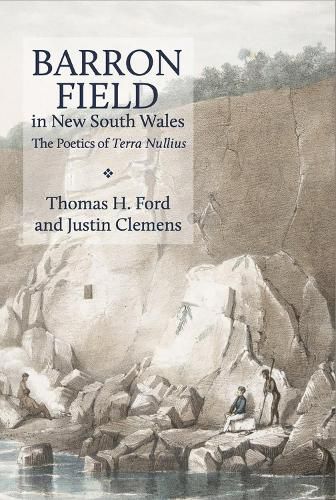There’s a moment in the HBO series True Blood where Anna Paquin’s character Sookie Stackhouse finds out who she really is. ‘I’m a fucking fairy?’ she spits. Even in a fictional world which accepts the existence of vampires and werewolves, fairies are cause for derision and incredulity. The mystery of Hannah Kent’s second novel The Good People is driven by the ways in which its characters skitter along an axis of belief that is equally unstable, if more clearly grounded in history. In rural Ireland in 1825, the local priest sees himself as a modern man, his task to rid the ignorant folk of their pagan beliefs. Already you can see the complication: the priest is hard, unsympathetic, and the people whose beliefs he sets out to set right are much more warm and complicated. But they believe in fairies.
The Good People opens, affectingly, with the sudden experience of grief in the life of Nóra! a woman who has lost her adult daughter and husband. After her husband’s death she hires a girl, Mary, to help care for her very ill grandson. The nature of this child’s illness is the key contention in the beliefs of the inhabitants of the valley. Nóra and her husband believed he was ‘ill-thriven’ because of the poverty in which he had been raised, but he does not improve with their care. No help is forthcoming from either doctor or priest, and a suggestion begins to circulate that he is ‘fairy-struck’. And so Nóra turns to Nance Roche, the woman in whom this novel is ultimately most interested.
Nance Roche is the local ‘handy woman’ (a euphemism for midwife); she heals illnesses with herbs and charms; she is the holder of the knowledge and practices the priest finds so repugnant, because they stem from a belief in the Good People (that’s the fairies). Nance Roche is an animation of old and continuing stereotypes about women as witches: dangerous, evil, abject, magic. It is with Nance Roche that this novel plays so interestingly with our sympathies. There is little doubt of her belief, her straightforward ethical code – she helps people to survive, she doesn’t curse people. She is lonely and hungry and loves her goat. But how do we feel about how she cures people? Her beliefs in the fairies and changelings and the places this takes her? We might be able to maintain an interested agnosticism, tinged with sympathy when the (entirely unsympathetic) priest and the (even more unsympathetic) Seán, are the vectors for criticism of Nance’s ways. And then the novel tests how far this sympathy will take us.
We are also tested in relation to the grieving widow, Nóra. The novel is focalised, at the outset, through this character who has an almost entire lack of sympathy towards her own grandson, a child we would now use the language of disability to describe. The novel does not grant us any access to his perspective, so we see him through the distaste of others: he wails, drools, his limbs ‘strangely twisted’. Nóra decides, quite simply, that he is not her grandchild: not a person at all. The notion that some people should be granted limited personhood is, of course, not a new one, and not limited to those with disabilities.
In its shifting of perspective and its ethical weight, The Good People is a more traditionally realist work than Kent’s previous novel, Burial Rites, which has had a lot of time in the sun for a book that is mostly set in the darkness of an Icelandic winter. If you read and enjoyed Burial Rites, as I did, you will be struck fairly early into The Good People by the similarities between the two. Again, we are in a world estranged from most of its readers by distance of time (the nineteenth century) and space (Ireland), but tethered to the real world by a criminal trial reported in the newspapers of the time. Again we are in a position to be delighted by the details of ways of living that are far from our own. Here we have another rural community, another way of speaking, another group of tough women in extreme circumstances. Again, we spend much of the novel enclosed in very tight domestic spaces, mostly with women who are not easily defined by their relationship to a family unit.
Kent continues a strand of rural gothic writing in Australia, mostly by women, which is interested in the physical containment of people experiencing extreme psychological states. In these two novels, women are trapped in dark houses full of smoke and bodies. They are trapped due to the weather, yes, but also due to opprobrium and shame. These houses harbour people who are the focus of prurient interest: a murderer, a grieving widow, a severely disabled child. Against this backdrop of small communities so invested in gossip and fear, Kent explores inter-generational relationships between women, and the particularities of women’s stages of life. One of the key pleasures of Burial Rites is the relationships that Agnes develops, not so much with the young priest who sets out to counsel her, but more so with the (almost-adult) daughters and mother by whom she is imprisoned.
In Nicholas Birns’ reading, Burial Rites is in some senses about Australia. There’s perhaps more reason to make such a reading in the case of The Good People: Irishness being so much a part of settler history; poverty and sectarianism part of the weft of our society. More so, there’s a moment in the novel which is shocking both for the cruelty leveled at the character involved as well as for its reverberation beyond its particular historical context. Nance Roche is accused of being the cause of death and hardship in the community, and as a result:
Men gathered outside Nance Roche’s hut that night, full of liquor, brandishing ash plants.
Nance heard them arrive. Their footsteps were loud as they crashed through the undergrowth, slashing at the bracken. Peering out of a gap in her wicker door, she saw Seán Lynch swaying at the head of the pack, stopping to unbutton his trousers. A few men cheered as he started to piss, aiming the dull splatter towards her hut.
There was the sound of something smashing. One of the men had thrown a poitin jug at the trunk of the oak tree.
‘You’re a black bitch!’ Seán suddenly spat, a thick line of spittle flying out of his mouth. The men grew silent at the fury in his voice. Through the chink in the door Nance could see five of them standing not ten yards away, their faces shining with sweat and drink.
This is a terrifying scene. Their accusations are unjustified, and their anger misplaced. Seán Lynch is a no-holds-barred villain: the novel allows no possibility of sympathy towards him. Nonetheless, the extent of his villainy remains believable, and frightening, because the form it takes is immediately recognisable: in his treatment of Nance, and his violence towards his wife, he is driven by misogyny in its clearest, most fear-fuelled form. But the particular form his hatred takes here – ‘black bitch’ – resonates through the novel.
Black is a deeply freighted word. The implication here is that Seán means it in the sense of designating something that is evil, sinister. But the shock it gives a contemporary reader is to do with race. Here, in nineteenth-century Ireland, we hear an insult that is still heard, today,often in situations more violent than this. The phrase resonates throughout the novel as a whole not only because of its concern with violence against women, but also because of the ways in which Irishness itself has been racialised. Colonial language often described Irish Catholics as black, in a term designating Irishness as racially other, as ‘backward’. Kent brings this into play towards the end of the novel, when the criminal justice system of the city sets out to make a judgement on this community’s beliefs.
In the courtroom, Mary wonders
How could she speak in front of all these people? All these men in their fine clothes, and the judge come all the way from Dublin. She was only a girl from a bog. A girl of the rushes and the turf ground, where the soil oozed black and it was only ever grass and dust and clay underfoot, never the cobbles, never the lacquer of wood.
In the courtroom, as in the eyes of the priest, the beliefs of this rural community are positioned as belonging in the past. I’m not going to go as far as Birns: I don’t think there’s enough evidence to see the Ireland of The Good People as allegorical of colonial Australia. However, I do think it continues some of the fictional work that Peter Carey does in The True History of the Kelly Gang, in thinking about the relationship between sectarianism and racism in ways that have implications for us here. Colonialism has long been functioning on several fronts at once in Australia, with people bringing to this country their own histories of colonial oppression. Kent does much better than Carey in pointing to the ways in which racialist thinking fuels and is fueled by misogyny, too.
The Good People is about a question that has had and continues to have a bearing on our history and present, and that is how individuals, communities, and legal institutions understand systems of belief that are different from their own, and different ways of accounting for things that are difficult to understand. Nance’s aunt (who also felt an affinity with the Good People), tells her, ‘There are worlds beyond our own that we must share this earth with.’ This is a clear enough indication that the belief in fairies is just just one among many ways of accounting for things that seem beyond the range of the material world. In this respect, while The Good People offers many of the same pleasures as Burial Rites – suspense, lyricism, tragedy – it uses them in more interesting and challenging ways.
Hannah Kent has already been discussed in the Sydney Review of Books at length: both Ben Etherington and Stuart Glover see her as as epitomising certain features of contemporary publishing in Australia and elsewhere. The fact that Etherington and Glover focus on the circumstances of the publication, circulation and reception of Burial Rites is not surprising, because Kent is tied to the economics of publishing in a way that other early-career novelists might not be, for the simple fact that her debut received an unusual degree of support from its publisher and from readers. Burial Rites was a best-seller, granting Kent the dubious status of the ‘best-selling author.’ I say dubious because definitions of literary value have historically been shaped by antagonism to the marketplace and distrust of lay readers. Kent is interesting to literary studies scholars like me because this bestseller is a ‘studious historical novel with literary pretensions’ (in Etherington’s terms) from an author who is not already a well-established literary celebrity. Etherington explains this phenomenon in relation to the cycle of support and promotion that publishers will give a novel that they invest their hopes in, such as Burial Rites. Glover discusses it in terms of the rise of creative writing programs and the kinds of ‘competence’ they encourage. I think it has something to do with the interesting – and satisfying – things Kent does with the genre of crime fiction.
Underlying the interest in Kent is, I think, a level of uncertainty about how to place her work in relation to a hierarchy of literary value. Kent’s novel can be described by Etherington has having ‘literary pretensions’ because its use of language is, as he points out, often startling and beautiful, and sometimes lyrical in a way that we might consider to be ‘too much’ to be literary. The same is true of The Good People. Nóra’s response to the death of her husband is described in language that does not step back from they extremities of grief, but still veers towards hyperbole: she remembers Martin carrying her ‘on the night of their wedding as though she was nothing more than sunlight.’
I know this probably makes me a bad reviewer but I am pretty agnostic about the question of literary value. I carry the inherent suspicion of canonicity of my generation of scholars and feminists (and the generation that went just before me). The question of what makes a book important, or even very good, is difficult for me. But to review a novel is to wade into the waters of literary value and try to snag something on your stick. I tend to snag things I have inherited from modernism and its impact on my education as a literary studies scholar: the complexity of the ideas that the book is grappling with, or its awareness of other books, or its ability to do something new. But there are others things to snag, that have tended to be coded feminine: the pleasure of plot, the engagement of complex identification, recognition, thrill (the kinds of things Rita Felski writes so beautifully about in The Uses of Literature).
There is one aspect of Kent’s novels that has not been often snagged by its reviewers, and this is surprising: its relation to genre. Burial Rites and The Good People are crime novels: they recount the committing of and aftermath of a violent crime (in both cases, a murder); follow the alleged perpetrators through the courts and, in the case of Burial Rites at least, lead us on a familiar but no less pleasurable path to finding out who did it, and why. They are also true crime novels: they use some of the devices of fiction to try to understand crimes that happened in the past, and people’s responses to them. They do exactly what Rosalind Smith describes as the key feature of true crime narratives: they mobilise the power of myth, superstition and affect. Crime fiction can be held outside of definitions of the literary because of the overwhelming nature of the narrative drive to know what happens in crime novels. The suspense of Burial Rites is such that it does provide this kind of reading experience: there is a big reveal, we find out what happened, we might feel pity and anger but ultimately we are satisfied. The Good People does not snap the door shut on us quite so easily, largely because we know what happened. The narrative places us right there at the moment of the crime and leaves us in little doubt about the actual events that took place. The mystery is more diffuse and ethical: whose fault was it? What were the intentions at play? Was it a crime, after all? In this way The Good People does what the best crime fiction can: gets into the thorny questions that juries, judges and legislators grapple with all the time.
Crime fiction has long had its own internal hierarchies. The most influential of these is Raymond Chandler’s famous roasting of clue-puzzle detective fiction in ‘The Simple Art of Murder’ (1950), in which he positions Dashiell Hammett as exemplar of literary realism in crime fiction. I’m not the first to point out that this is a particularly gendered view of crime fiction. Chandler writes:
But down these mean streets a man must go who is not himself mean, who is neither tarnished nor afraid. The detective in this kind of story must be such a man. He is the hero, he is everything. He must be a complete man and a common man and yet an unusual man. He must be, to use a rather weathered phrase, a man of honor, by instinct, by inevitability, without thought of it, and certainly without saying it. He must be the best man in his world and a good enough man for any world.
You get the idea. The distinction between crime fiction that is ‘realistic’ – and can make some claims to the literary – and that which is not and cannot, is strongly gendered from the beginning. So I find myself wondering what Chandler would make of Hannah Kent. In his inherent distrust of soft furnishings I can imagine an easy dismissal of the historical nature of Kent’s undertaking: the scenery, the detail of clothing and food, customs and ways of speaking – I love all this, by the way, especially the speaking and the food. (Many potatoes are consumed over the course of The Good People.) But Chandler’s critique of the bloodless nature of much of this crime fiction does not apply to Kent. Her novels are invested in viscerality to an extent that far surpasses Hammett, even if the body counts are lower. Burial Rites certainly has a bloody murder scene, but more than this both it and The Good People are interested in piss and shit, especially in relation to women and children’s bodies. I suspect that Chandler would be grossed out, in the way that crime fiction writers are often grossed out and fascinated by the abject female body, alive and dead. As a genre in fiction, film and especially TV, crime narratives are attracting increasing attention (and critique) for their investment in ‘crime porn’: detailed representations of violence against women. Kent pushes crime fiction in quite a different direction: her gore is put to the purpose of thinking about how old stories about women work against women, then and now.
Kent takes on what has historically been a male subject position in the literary field: the writer of literary crime fiction. We could argue about this qualifier all day but my suspicion is that the tenor of the argument would be different (indeed, we might not be having it at all), if she were a man. This is, among other things, because the category of the middlebrow offers itself as an easy and feminine-coded bucket in which to place a possibly-literary genre novel by a woman. In part because of its historically derogative and gendered associations, I don’t think it’s useful to think of the middlebrow as something that resides in textual properties, or describes any particular novel, although as Beth Driscoll has argued it does usefully describe a set of practices of literary consumption (book clubs, literary festivals) to which Kent’s work is amenable – as, I might add, is the work of many writers whose status as capital L-literary is less problematised by their relation to the market.
In the discussion around Kent’s career to date there is a note of discomfort: why should she, and not other writers, be singled out for such publisher support? I am, rather, heartened by it. In thinking about Kent’s work I’m taking up Andrew McCann’s suggestion of ‘the possibility of thinking expansively and non-prejudicially about the political effects of reading practices driven by the market’. The publishers’ decisions to back Kent indicate an expansiveness in the genres of historical and crime fiction that to my mind bodes well for readers and publishers alike. Kent writes crime fiction that is attentive to its use of language and the complexities of history, and that is intensely interested in women as characters – almost to the exclusion of her men, who are flat in the way that women in crime fiction long tended to be. Frankly, this is my kind of best-seller.
Works Cited
Nicholas Birns, Contemporary Australian Literature: A World Not Yet Dead. (Sydney UP, 2015).
Raymond Chandler, The Simple Art of Murder (Houghton Mifflin, 1950)
Beth Driscoll, The New Literary Middlebrow: Tastemakers and Reading in the Twenty-First Century (Palgrave Macmillan, 2014).
Ben Etherington, ‘The Real Deal.’ Sydney Review of Books (8 November 2013).
Rita Felski, The Uses of Literature (John Wiley, 2011).
Stuart Glover, ‘So Many Paths that Wind and Wind.’ Sydney Review of Books (4 October 2013).
Rosalind Smith, ‘Dark Places: True Crime Writing in Australia.’ JASAL, 8 (2008).
